- Clone
- 12G5 (See other available formats)
- Regulatory Status
- RUO
- Workshop
- VII 70204
- Other Names
- CXCR4, Fusin
- Isotype
- Mouse IgG2a, κ
- Ave. Rating
- Submit a Review
- Product Citations
- publications
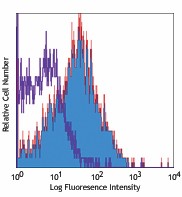
-

Human peripheral blood lymphocytes stained with LEAF™ purified 12G5, followed by biotinylated anti-mouse IgG and Sav-PE -

MCF7 breast cancer cell line was stained with anti-human CD184, detected with anti-mouse DyLight™ 649, and nuclear counterstained with DAPI. Images were acquired with a TE300 fluorescence microscope with a 20x objective. Data provided by: Er Liu and John Nolan, La Jolla Bioengineering Institute
| Cat # | Size | Price | Quantity Check Availability | Save | ||
|---|---|---|---|---|---|---|
| 306539 | 100 µg | $270 | ||||
| 306540 | 1 mg | $677 | ||||
CD184, also known as fusin or CXCR4, is a 45 kD seven transmembrane G-protein-linked CXC chemokine receptor. CD184 is widely expressed on blood and tissue cells, including B and T cells, monocytes, macrophages, dendritic cells, granulocytes, megakaryocytes/platelets, lymphoid, myeloid precursor cells, endothelial cells, epithelial cells, astrocytes, and neurons, among other tissue cells. CD184 is the receptor for CXC chemokine SDF-1, mediates blood cell migration, and is involved in B lymphopoiesis and myelopoiesis, cardiogenesis, blood vessel formation, and cerebellar development. CXCR4 is also a coreceptor of X4 HIV-1 and an alternative receptor for some isolates of HIV-2.
Product DetailsProduct Details
- Verified Reactivity
- Human, Cynomolgus, Rhesus
- Reported Reactivity
- African Green, Baboon, Chimpanzee, Sooty Mangabey
- Antibody Type
- Monoclonal
- Host Species
- Mouse
- Immunogen
- CP-MAC-infected Sup-T1 cells
- Formulation
- 0.2 µm filtered in phosphate-buffered solution, pH 7.2, containing no preservative.
- Endotoxin Level
- Less than 0.01 EU/µg of the protein (< 0.001 ng/µg of the protein) as determined by the LAL test.
- Preparation
- The Ultra-LEAF™ (Low Endotoxin, Azide-Free) antibody was purified by affinity chromatography.
- Concentration
- The antibody is bottled at the concentration indicated on the vial, typically between 2 mg/mL and 3 mg/mL. Older lots may have also been bottled at 1 mg/mL. To obtain lot-specific concentration and expiration, please enter the lot number in our Certificate of Analysis online tool.
- Storage & Handling
- The antibody solution should be stored undiluted between 2°C and 8°C. This Ultra-LEAF™ solution contains no preservative; handle under aseptic conditions.
- Application
-
FC - Quality tested
ICC, CyTOF® - Verified
IHC, Block - Reported in the literature, not verified in house - Recommended Usage
-
Each lot of this antibody is quality control tested by immunofluorescent staining with flow cytometric analysis. For flow cytometric staining, the suggested use of this reagent is ≤ 1.0 µg per million cells in 100 µL volume. It is recommended that the reagent be titrated for optimal performance for each application.
- Application Notes
-
Additional reported applications (for the relevant formats) include: immunohistochemical staining of paraffin-embedded tissue sections11, immunocytochemistry3, immunofluorescence microscopy2,6, and blocking of CD4-independent infection by HIV-2 and CD4-dependent infection by some T cell-tropic isolates of HIV-14,5. Clone 12G5 may not be suitable for Western blotting.10 The Ultra-LEAF™ purified antibody (Endotoxin <0.01 EU/µg, Azide-Free, 0.2 µm filtered) is recommended for functional assays (Cat. Nos. 306539 & 306540).
-
Application References
(PubMed link indicates BioLegend citation) -
- McKnight A, et al. 1997. J. Virol. 71:1692.
- Endres MJ, et al. 1996. Cell 87:745. (Immunogen, IF)
- Volin MV, et al. 1998. Biochem. Biophys. Res. Commun. 242:46. (ICC)
- Berndt C, et al. 1998. P. Natl. Acad. Sci. USA 95:12556. (Block)
- Ullrich CK, et al. 2000. Blood 96:1438. (Block)
- Murga M, et al. 2005. Blood 105:1992. (IF)
- Thompson BD. 2007. J. Biol. Chem. 282:9547. (FC) PubMed
- Isnardi I, et al. 2010. Blood 115:5026. PubMed
- Yoshino N, et al. 2000. Exp. Anim. (Tokyo) 49:97. (FC)
- Fischer T, et al. 2008. PLoS One 3:e4069.
- Schmid BC, et al. 2004. Breast Cancer Res. Treat. 84:247. (IHC)
- RRID
-
AB_2814149 (BioLegend Cat. No. 306539)
AB_2814150 (BioLegend Cat. No. 306540)
Antigen Details
- Structure
- Rhodopsin family, G-protein linked seven transmembrane glycoprotein, 45 kD
- Distribution
-
T cells and B cells, dendritic cells, monocytes, granulocytes, hematopoietic progenitors, endothelial cells
- Function
- B lymphopoiesis and myelopoiesis, cardiogenesis, blood vessel formation, cerebellar development
- Ligand/Receptor
- SDF-1 receptor, coreceptor for X4 HIV-1
- Cell Type
- B cells, Dendritic cells, Endothelial cells, Granulocytes, Hematopoietic stem and progenitors, Mesenchymal Stem Cells, Monocytes, Neural Stem Cells, T cells, Tregs
- Biology Area
- Cell Biology, Immunology, Innate Immunity, Neuroinflammation, Neuroscience, Neuroscience Cell Markers, Stem Cells
- Molecular Family
- CD Molecules, Cytokine/Chemokine Receptors, GPCR
- Antigen References
-
1. Berger E, et al. 1999. Annu. Rev. Immunol. 17:657.
2. Loetscher P, et al. 2000. Adv. Immunol. 74:127.
3. Murphy P, et al. 2000. Pharmacol. Rev. 52:145. - Gene ID
- 7852 View all products for this Gene ID
- UniProt
- View information about CD184 on UniProt.org
Related FAQs
- Does staining at room temperature or even at 37°C help for checking chemokine receptors expression?
-
Due to continuous recycling of many chemokine receptors, it may be worthwhile to consider staining at room temperature or at 37°C if the staining at lower temperature (which can potentially reduce receptor turnover) is not optimal.
- Do you guarantee that your antibodies are totally pathogen free?
-
BioLegend does not test for pathogens in-house aside from the GoInVivo™ product line. However, upon request, this can be tested on a custom basis with an outside, independent laboratory.
- Does BioLegend test each Ultra-LEAF™ antibody by functional assay?
-
No, BioLegend does not test Ultra-LEAF™ antibodies by functional assays unless otherwise indicated. Due to the possible complexities and variations of uses of biofunctional antibodies in different assays and because of the large product portfolio, BioLegend does not currently perform functional assays as a routine QC for the antibodies. However, we do provide references in which the antibodies were used for functional assays and we do perform QC to verify the specificity and quality of the antibody based on our strict specification criteria.
- Does BioLegend test each Ultra-LEAF™ antibody for potential pathogens?
-
No, BioLegend does not test for pathogens in-house unless otherwise indicated. However, we can recommend an outside vendor to perform this testing as needed.
- Have you tested this Ultra-LEAF™ antibody for in vivo or in vitro applications?
-
We don't test our antibodies for in vivo or in vitro applications unless otherwise indicated. Depending on the product, the TDS may describe literature supporting usage of a particular product for bioassay. It may be best to further consult the literature to find clone specific information.
Other Formats
View All CD184 Reagents Request Custom ConjugationCompare Data Across All Formats
This data display is provided for general comparisons between formats.
Your actual data may vary due to variations in samples, target cells, instruments and their settings, staining conditions, and other factors.
If you need assistance with selecting the best format contact our expert technical support team.
-
APC anti-human CD184 (CXCR4)
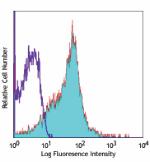
Human peripheral blood lymphocytes stained with 12G5 APC -
Biotin anti-human CD184 (CXCR4)
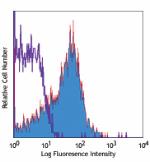
Human peripheral blood lymphocytes stained with biotinylated... -
PE anti-human CD184 (CXCR4)
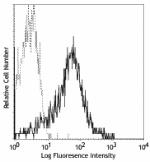
Human peripheral blood lymphocytes stained with 12G5 PE -
PE/Cyanine5 anti-human CD184 (CXCR4)
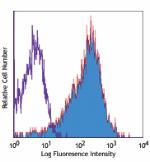
Human peripheral blood lymphocytes stained with 12G5 PE/Cyan... -
Purified anti-human CD184 (CXCR4)

Human peripheral blood lymphocytes stained with purified 12G... 
MCF7 breast cancer cell line was stained with anti-human CD1... -
PerCP/Cyanine5.5 anti-human CD184 (CXCR4)
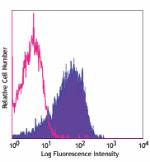
Human peripheral blood lymphocytes stained with 12G5 PerCP/C... -
PE/Cyanine7 anti-human CD184 (CXCR4)
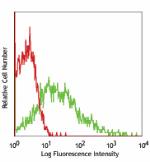
Human peripheral blood lymphocytes stained with 12G5 PE/Cyan... -
Brilliant Violet 421™ anti-human CD184 (CXCR4)

Human peripheral blood lymphocytes were stained with CD184 (... -
Brilliant Violet 605™ anti-human CD184 (CXCR4)
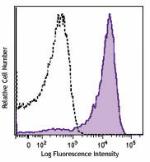
Human peripheral blood lymphocytes were stained with CD184 (... -
Purified anti-human CD184 (CXCR4) (Maxpar® Ready)
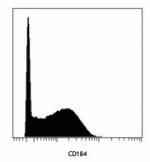
Human PBMCs stained with 175Lu-anti-CD184 (CXCR4) (12G5). Da... -
PE/Dazzle™ 594 anti-human CD184 (CXCR4)
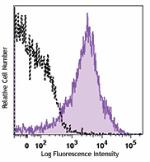
Human peripheral blood lymphocytes were stained with CD184 (... -
APC/Cyanine7 anti-human CD184 (CXCR4)

Human peripheral blood lymphocytes were stained with CD184 (... -
Brilliant Violet 785™ anti-human CD184 (CXCR4)
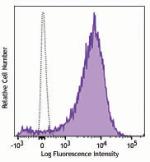
Human peripheral blood lymphocytes were stained with Brillia... -
TotalSeq™-A0366 anti-human CD184 (CXCR4)
-
TotalSeq™-C0366 anti-human CD184 (CXCR4)
-
Brilliant Violet 510™ anti-human CD184 (CXCR4)

Human peripheral blood lymphocytes were stained with CD3 FIT... -
Ultra-LEAF™ Purified anti-human CD184 (CXCR4)

Human peripheral blood lymphocytes stained with LEAF™ purifi... 
MCF7 breast cancer cell line was stained with anti-human CD1... -
APC/Fire™ 750 anti-human CD184 (CXCR4)

Human peripheral blood lymphocytes were stained with CD3 FIT... -
TotalSeq™-B0366 anti-human CD184 (CXCR4)
-
TotalSeq™-D0366 anti-human CD184 (CXCR4)
 Login/Register
Login/Register 









Follow Us